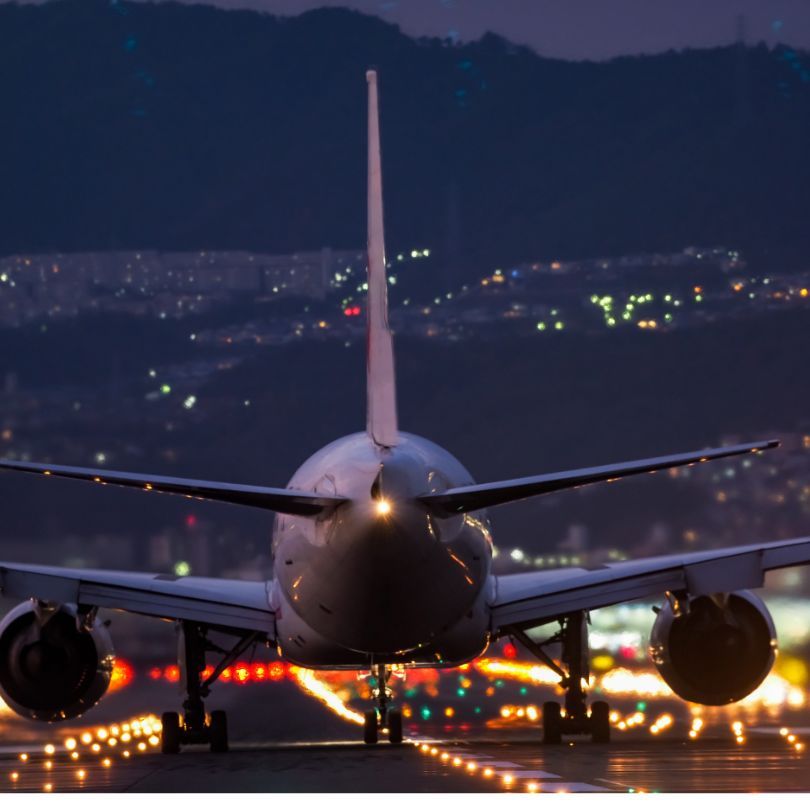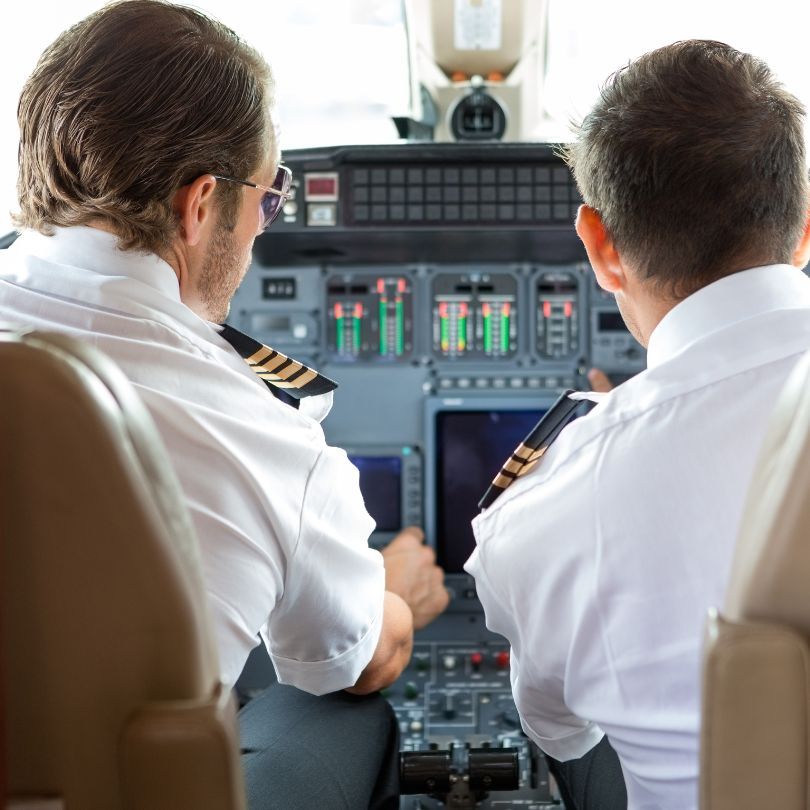
Article-at-a-Glance
Discover the intricate process of selecting the right private jet for each unique mission.
Learn about the critical role of flight planning in private aviation, including route mapping and securing permits.
Explore the essential ground operations that ensure a safe and smooth journey.
Understand the importance of regular maintenance and the high standards of private jet upkeep.
Gain insights into the challenges and solutions of providing seamless service in private jet operations.

When you see a private jet slicing through the clouds, it’s easy to marvel at the seamless elegance of its flight. But have you ever wondered what goes on behind those tinted windows and polished fuselages? Let’s dive into the fascinating world of private jets and uncover the meticulous technical operations that make every luxurious journey possible.
The Flight Before the Flight: A Peek into Private Jet Technicalities
Imagine a world where your travel doesn’t start with long lines and cramped seats but with a serene lounge and a flight tailored just for you. This is the realm of private jets, where every detail is curated to create an unparalleled travel experience. But before you step on board, a complex ballet of planning and preparation has already unfolded.
Most importantly, each flight begins long before the engines roar to life. It starts with a thorough analysis of the passenger’s needs, the weather patterns, and the intricate web of air traffic regulations. This is where the technical team shines, orchestrating every element to ensure your journey is not just safe, but also efficient and enjoyable.
Because the world of private aviation is about more than just getting from point A to point B—it’s about crafting an experience that’s as smooth as it is swift. Therefore, let’s pull back the curtain and reveal the technical symphony that enables these majestic machines to take to the skies.
Blueprint of the Skies: Private Jet Selection
Choosing the right jet is like picking the perfect steed for a knight; it has to be a perfect match for the mission at hand. This decision is based on a variety of factors such as distance, passenger count, and the amenities required.
Matching Aircraft to Mission Profiles
It’s not as simple as ‘bigger is better.’ Instead, we carefully consider the mission profile. This means looking at the length of the journey, the desired destination airports, and the level of luxury the passengers expect. We ask questions like: Will a light jet suffice for a quick hop between cities, or do we need the endurance of a heavy jet for a transatlantic trek?
Inside the Cabin: Features and Amenities
Customizable seating arrangements for comfort and productivity.
High-speed Wi-Fi to stay connected at all times.
Gourmet catering to satisfy any palate.
Once we’ve matched the jet to the mission, we turn our attention to the cabin. Here, the aim is to create a space that isn’t just comfortable, but also conducive to the needs of the passengers. Whether it’s a business mogul needing to prepare for a meeting or a family looking to relax, the cabin is configured to make the most of the journey.
And let’s not forget the tech that keeps you connected even when you’re miles above the ground. From lightning-fast Wi-Fi to the latest in-flight entertainment systems, the technical operations team ensures that every gadget and gizmo is at the cutting edge.
Aviation Technology: Latest Advancements for Luxury Travel
The world of private aviation is constantly evolving, with new technologies emerging that redefine what it means to fly in style. We see advancements such as touch-screen controls, advanced noise reduction systems, and even augmented reality windows that offer passengers a new way to view the world.
These technological marvels are more than just bells and whistles; they’re part of a commitment to safety, efficiency, and of course, luxury. They are meticulously integrated into the fabric of the aircraft, ensuring that each flight isn’t just a journey—it’s an experience.
Flight Planning: More Than Just Plotting A Course
Flight planning in the private jet world is an art form. It’s not just about drawing a line on a map; it’s about weaving through the tapestry of global air traffic control, weather systems, and regulatory requirements.
Weather Wisdom: Meteorology and Its Impact on Itineraries
Weather is more than just a topic for small talk in the world of private jets; it’s a crucial factor that can make or break a flight plan. Skilled meteorologists are part of the team, analyzing patterns and predicting changes that could affect the journey. They ensure that your flight avoids turbulence and storms, making for a smoother ride.
Airspace Navigation: Understanding Flight Routes and Regulations
The sky may seem like an open playground, but it’s actually a carefully managed mosaic of airways and zones. Navigating this invisible lattice requires expertise in understanding not just the physical geography, but also the ever-changing regulations that govern the skies.
Permits and Paperwork: The Logistics of Air Travel
Every flight is a mission that requires detailed planning and precise execution. This includes obtaining the necessary permits and paperwork to ensure legal and hassle-free travel. The complexity grows when crossing borders, as each country has its own set of rules and requirements for private aircraft.
The Unsung Heroes: Ground Operations Crew
The ground crew is the backbone of any flight operation. These dedicated professionals are the ones who ensure that everything is in place for a safe and timely departure. Their roles encompass a wide range of tasks, from baggage handling to aircraft servicing.
Understanding the optimal arrival time for private jet flights is a critical aspect of pre-flight preparations.
Before takeoff, the ground crew performs a series of checks and balances. They inspect the aircraft for any potential issues, ensure that the fuel levels are adequate, and verify that all systems are functioning correctly. It’s their meticulous attention to detail that sets the stage for a successful flight. For more insights, read about the latest innovations in private jet boarding and check-in processes.
Efficiency on the Tarmac: Refueling and Safety Checks
On the tarmac, speed and safety go hand in hand. Refueling must be done swiftly yet carefully to prevent any delays. Safety checks are thorough and methodical, as even the smallest oversight could lead to significant consequences. The ground crew’s expertise ensures that every box is checked and every procedure is followed.
For example, during the pre-flight phase, the ground operations team might discover a minor issue with the landing gear. Instead of rushing through, they take the time to investigate and resolve the problem, ensuring the safety of everyone on board.
Passenger Services: Catering to High Expectations
When it comes to private jet travel, passengers expect nothing less than the best. This is where the ground crew’s role in passenger services shines. They coordinate with caterers to provide gourmet meals, arrange for luxury ground transportation, and handle any last-minute requests with grace and efficiency.
Upkeep in the Hangar: The Role of Maintenance
Maintenance is not just about fixing what’s broken; it’s about preventing issues before they arise. A well-maintained aircraft is the cornerstone of safe and reliable private jet operations. The maintenance team works tirelessly behind the scenes to keep the fleet in top condition.
Inspection of engines and critical systems for any signs of wear and tear.
Updating software and avionics to ensure the latest navigation and communication capabilities.
Interior refurbishments to maintain the highest standards of comfort and luxury.
Scheduled Check-ups: Preventive Care for Aircraft
Regularly scheduled maintenance is akin to a routine health check-up. It’s a comprehensive examination of the aircraft to ensure everything is functioning as it should. These check-ups are methodical and detailed, covering everything from the engines to the upholstery.
Daily inspections to catch any minor issues before they escalate.
Periodic deep maintenance sessions that delve into the inner workings of the aircraft.
Record-keeping of every check-up, repair, and upgrade for complete transparency and accountability.
Technical Troubleshooting: Addressing the Unforeseen
Even with the best preventive measures, unforeseen issues can arise. When they do, it’s the maintenance team’s ability to troubleshoot and resolve problems quickly that keeps operations running smoothly. Their technical acumen is the unsung hero of every flight’s success. Learn more about mastering turnaround times for smooth travel.
Challenge of Seamless Service: Overcoming Operational Hurdles
Delivering seamless service in the face of operational hurdles is what sets private jet operations apart. It requires a blend of technical skill, meticulous planning, and a relentless commitment to excellence. The teams behind the scenes are adept at navigating air traffic complexities, managing international operations, and ensuring the crew is highly trained and ready for any scenario.
Air Traffic Complexities: Managing the Skies
The skies are a bustling highway of aircraft, each with its own destination and timeline. Managing this traffic is a complex dance that requires coordination with air traffic control and a deep understanding of flight dynamics.
International Operations: Navigating Global Aviation Policies
As jets cross borders, they enter different regulatory environments. Operators must be well-versed in international aviation policies to avoid any legal or logistical snags. This global perspective is crucial for ensuring a smooth and uninterrupted journey.
The Human Factor: Training and Expertise among Crew is crucial in ensuring a seamless private jet travel experience.
At the heart of every operation is the human element. The crew’s training and expertise are paramount, as they are the ones who execute the flight plan and respond to any in-flight situations. Their skill and professionalism are what ultimately deliver the promise of private aviation: a safe, efficient, and luxurious experience.
In conclusion, the world of private jet operations is a complex ecosystem where every role is critical, and every detail matters. From the initial selection of the jet to the final touchdown, it’s the dedication and expertise of countless individuals that make the magic of private flight a reality. So, the next time you gaze at a private jet, remember the orchestra of technical operations that play in harmony to ensure that every journey is as perfect as it appears from the ground.
Behind every private jet, there’s a story of precision and dedication. It’s a narrative that unfolds in the hangar, in the planning offices, and on the tarmac—a tale that begins long before you board the aircraft. As we’ve journeyed through the various aspects of private jet technical operations, we’ve seen the meticulous care and attention to detail that ensures each flight is not just a trip, but an experience to remember.
Air Traffic Complexities: Managing the Skies
The dance of aircraft in the sky is choreographed with precision and expertise. Private jets, like all aircraft, must navigate through a complex network of air traffic. This involves communicating with air traffic control, following established flight paths, and adapting to real-time changes in the airspace. The goal is to maintain a safe distance from other aircraft while ensuring the most direct and efficient route for passengers.
International Operations: Navigating Global Aviation Policies
When a private jet crosses international borders, it enters a maze of diverse aviation policies. Operators must navigate these with finesse, ensuring compliance with each country’s regulations. This can include everything from customs protocols to specific operational procedures. Mastery of these policies is essential to delivering a seamless global travel experience.
The Human Factor: Training and Expertise among Crew
The human element cannot be understated. The expertise and training of the crew are the linchpins of private jet operations. Pilots, engineers, and ground staff undergo rigorous training to handle the sophisticated systems aboard these jets. Their ability to respond adeptly in any situation is what ultimately upholds the high standards of safety and service in private aviation.
Frequently Asked Questions
How do Private Jets Differ Technically from Commercial Aircraft?
Private jets differ from commercial aircraft in several technical aspects. They are generally smaller and more agile, allowing for access to a wider range of airports. Their cabins are designed for luxury and personalized comfort, often featuring advanced technology for communication and entertainment. Additionally, private jets have a different maintenance and operational regimen, tailored to their specific usage patterns and client needs.
What Qualifications Do Private Jet Pilots Have?
Commercial Pilot License (CPL) or Airline Transport Pilot License (ATPL).
Specific type ratings for the aircraft they operate.
Ongoing training and re-certification to maintain proficiency and safety standards.
Private jet pilots are highly qualified professionals. They hold commercial pilot licenses at a minimum, and often have airline transport pilot licenses. They undergo rigorous training, including specific type ratings for the aircraft they fly. Their qualifications ensure they can handle the unique demands of private jet flying, from navigating complex routes to providing bespoke service.
How Are Flight Routes Determined for Private Jets?
Flight routes for private jets are determined by a combination of factors, including passenger preferences, the aircraft’s capabilities, weather conditions, and air traffic regulations. Flight planners work to find the most efficient and safe route, often customizing the path to offer the best possible experience for passengers. They must also consider factors like fuel stops and overflight permissions for international trips.
What Happens During a Private Jet Maintenance Check?
A private jet maintenance check is a thorough examination of the aircraft. It can range from a basic visual inspection to a detailed review of all mechanical systems. Maintenance checks are categorized by their depth and frequency, from pre-flight inspections to heavy maintenance that might involve taking the aircraft out of service for an extended period. Each check ensures that the jet meets stringent safety and performance standards.
How Do Weather Conditions Affect Private Jet Operations?
Weather conditions play a critical role in private jet operations. Adverse weather can lead to changes in flight routes, delays, or, in extreme cases, cancellations. Pilots and flight planners must monitor weather forecasts and real-time updates to make informed decisions. They prioritize safety while also striving to minimize inconvenience, often leveraging the jet’s capabilities to fly above or around disruptive weather.
In closing, the world of private jet operations is a testament to the art of fine-tuning and the pursuit of perfection. It’s a symphony of technical expertise, where every note must be pitch-perfect. For those who are part of this world, the satisfaction comes from knowing that they have provided an unparalleled travel experience, defined by luxury, efficiency, and above all, an unwavering commitment to safety. As we part ways with this glimpse behind the scenes, let it be a reminder of the extraordinary human endeavor that makes the miracle of flight not just possible, but exceptional.
Understanding the technical aspects of private jet operations is crucial for ensuring safety, efficiency, and a seamless travel experience. This includes considering factors such as jet noise reduction technology, optimal flight scheduling, and understanding the impact of stair design in private jets. By delving into these details, passengers and operators can enjoy the benefits of private aviation to their fullest extent. Ready for a new level of travel? Click here to request a quote or begin your extraordinary journey: Start Your Adventure.














Leave a Reply